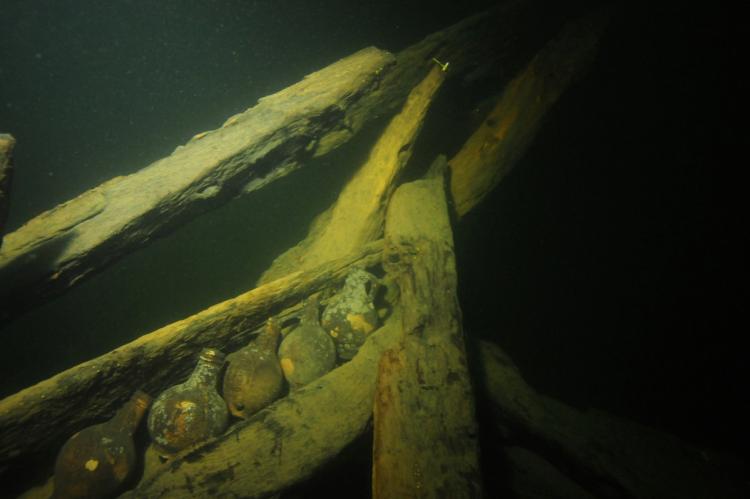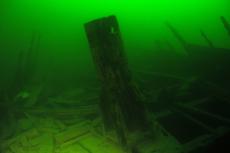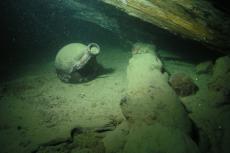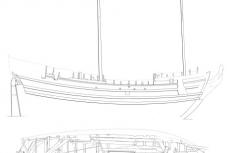Legendary Swedish 17th century shipwreck identified
The Dalarö Wreck has been identified in documentary sources as the small Swedish naval vessel Bodekull that sank in 1678 during the Scanian War, Swedish archaeologists announced on Thursday-
The wreck was discovered in 2003 north of Dalarö in the Stockholm Archipelago. Artefacts indicated that the ship sank during the mid or later half of the 17th century.
Largely intact
With a coherent hull, intact deck and two masts still standing the wreck is one of the best preserved 17th century ships in the world. Even if it is a small vessel it has many details in common with large sailing warships, such as gun ports along the sides and a lion figure head. Despite the massive attention the wreck has achieved, from researchers, media and others, the original identity of the wreck has remained an open question until now.
The answer was found by Niklas Eriksson, postdoctor at the Centre for Maritime Studies and the Department of Archaeology and Classical Studies. In the preserved minutes and letters of the Swedish Admiralty kept in the Military Archives. In 1659 Karl X Gustav ordered a number of small vessels to be used for transport of horses and soldiers in his war against Denmark. After the unpredicted death of the king, the campaign against Denmark was cancelled and the unfinished ships ordered before his death were rebuilt in different ways.
One of these was Bodekull, which was built under supervision of the newly recruited English Master Shipwright Thomas Day between 1659 and 1661. As the design was changed during construction, several unique details, that are also visible on the wreck, are mentioned in the preserved correspondence between the shipyard and the Admiralty.
Another war
In 1675 the war with Denmark broke out again. During the fall of 1678 the Swedish fleet sought winter quarters just north of Kalmar instead of returning to Stockholm in order to take advantage of the earlier ice-break in the southern harbour. Bodekull was sent to grind cereals at a mill along the coast under the command of Olof Styff. Despite his instructions he sailed to Fagerholmen in the Stockholm archipelago. On its way back the ship hit a rock and sank. 20 barrels of water soaked flour was sent to Stockholm. The story of Bodekulls foundering was written down in the documents thanks to the extensive discussions within the Admiralty on how to make bread out of the soaked flour.
The opportunity to study Bodekull through both material remains at the seabed and written documents in archives provides a unique opportunity to reveal previously unexplored aspects of the everyday activities of the navy as well as the crews everyday life onboard.

































